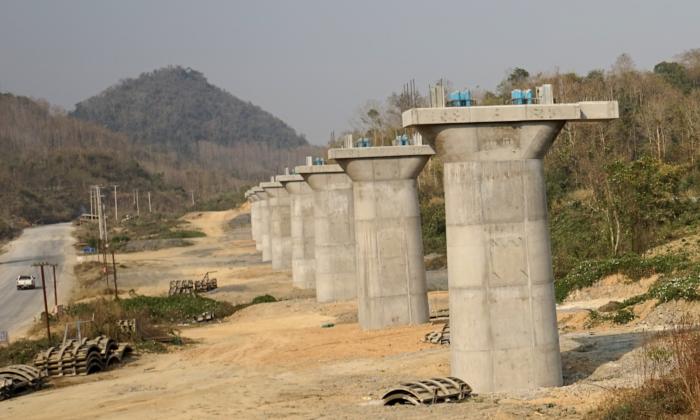Commentary
Originally envisioned as Chinese leader Xi Jinping’s flagship project for global influence, the Belt and Road Initiative (BRI) is losing momentum due to project delays, cancellations, and a growing number of unfinished projects.
In late 2024, Brazil became the latest major economy to
reject the BRI, also known as “One Belt, One Road,” following India and Italy in distancing itself from Xi’s global infrastructure project. While President Luiz Inácio Lula da Silva has not cut ties with Beijing, he has decided that Brazil would be better off maintaining bilateral engagement rather than formally joining the BRI. His decision reflects growing skepticism about the initiative’s long-term benefits.
The BRI launched with great fanfare in 2013, eventually drawing
150 countries into its fold. However, a broader backlash has since developed due to unmet promises, financial entanglements, accusations of debt-trap diplomacy, and China’s expanding geopolitical influence. As a result, multiple nations are reevaluating their participation. With two of the largest BRICS economies, India and Brazil, opting out, the Belt and Road’s global credibility is eroding, dealing yet another blow to the ambitions of the Chinese Communist Party (CCP) in reshaping global trade through infrastructure diplomacy.
Far from being a global game-changer, the BRI has been defined by delays, inefficiencies, and failures. The
China-Pakistan Economic Corridor (CPEC), originally meant to be the crown jewel of the BRI, exemplifies these issues, with Gwadar Port remaining non-functional due to poor planning, corruption, and insurgent attacks.
Meanwhile, key infrastructure projects like the Karachi–Lahore Motorway and the ML-1 railway modernization from Karachi to Peshawar remain unfinished or stalled, as Beijing refuses to finance them without Pakistan assuming unsustainable debt. With
$69 billion owed to China, Pakistan now faces worsening trade imbalances, financial instability, and security risks rather than the economic prosperity the BRI initially promised.
Beyond the CPEC, other BRI projects have brought little benefit, often leaving participating countries worse off than before. Indonesia’s high-speed rail remains incomplete, and Kenya’s “
railway to nowhere“ has become a financial burden. China’s investments in ports such as
Sri Lanka’s Hambantota, Pakistan’s Gwadar, and Bangladesh’s Payra prioritize Beijing’s strategic interests over local economic growth.
Hambantota is one of the most notorious examples. Despite warnings about its limited economic viability,
Sri Lanka took more than $1 billion in Chinese loans to finance the project. When the port failed to generate revenue for repayment, the government was forced to lease it to a Chinese state-owned company in 2017 for 99 years, effectively relinquishing control over a vital maritime asset.
The BRI in
Southeast Asia has also failed to live up to its promises, with more than $50 billion in pledged infrastructure projects remaining undelivered. A report from the Lowy Institute reveals that while China is the region’s largest infrastructure financier, only 35 percent of its projects have been completed, compared to 64 percent for Japan and 53 percent for the Asian Development Bank.
Laos, drawn in by promises of development, took on massive debt to finance the $6 billion
Boten–Vientiane railway. However, it faced a severe financial crisis that led to China seizing a 90 percent interest and effective control of its national electricity grid in 2020.
For many nations caught in the BRI’s web, these infrastructure loans serve as a tool for Beijing’s long-term financial leverage, leaving them
economically dependent and politically vulnerable to the CCP.
In addition to debt diplomacy, Beijing’s
economic strategy includes dumping excess production into BRI partner nations and flooding markets, such as Cambodia, Nepal, and Burma (also known as Myanmar), with cheap Chinese goods. This practice undercuts local industries, stifles domestic innovation, and creates long-term economic dependence.
Even more concerning, many BRI investments carry dual-use potential, allowing the Chinese regime to convert civilian infrastructure into military assets, expanding its strategic footprint in the Indian Ocean and beyond. Ports and railways built under the guise of trade could serve as military logistics hubs, raising serious security concerns for host nations.
For nations caught in Beijing’s web, the cost of the CCP’s “
friendship“ extends far beyond financial debt—it erodes sovereignty, restricts policy choices, and deepens economic dependence. The experiences of Sri Lanka, Pakistan, and Laos serve as stark warnings that the allure of Chinese investment often comes with a heavy price. Rather than fostering development, the BRI has left countries burdened with unsustainable debt, unfinished or unserviceable projects, and greater vulnerability to CCP influence.
While the CCP continues to promote the BRI as a success, reality tells a different story. In 2023, Belt and Road engagement ceased entirely in
19 countries, including Turkey and Kenya, while Russia, which had no deals in 2022, signed only one agreement. By 2024, more countries had canceled or halted BRI projects, even as China’s overall
outbound investment increased by 10 percent. However, this figure includes all outbound investments, not just BRI projects, and does not indicate the initiative is thriving.
Much of this increase can be attributed to non-BRI investments, such as acquisitions in high-tech industries, energy deals outside the BRI framework, and capital injections into state-owned enterprises operating overseas. Additionally, high global inflation in 2024 inflated investment figures, making it appear as though China was expanding its overseas commitments when, in reality, rising costs for materials, labor, and energy simply drove up expenditures. Rather than genuine growth, Beijing may be injecting more capital to prevent defaults, restructure loans, or maintain its footholds in key regions as infrastructure projects stall or fail to generate returns.
Far from signaling success, China’s rising outbound investment could reflect its growing financial burden as it struggles to sustain the BRI. The initiative is no longer expanding but quietly retreating as more nations recognize the risks and seek to extricate themselves from the CCP’s grip.
Views expressed in this article are opinions of the author and do not necessarily reflect the views of The Epoch Times.







